Vincent Black Shadow
With Ian Falloon
In the world of classic motorcycles the Vincent Black Shadow is unequalled. The Black Shadow exemplifies the legend defining classic motorcycles possessed all the criteria that defines the ultimate classic.
It was outrageously expensive in its day, was produced in only moderate numbers, provided unequalled performance, and looked fantastic.
When it was new the Black Shadow was the bike of dreams, and although production ended more nearly 70 years ago, it remains so for many enthusiasts.
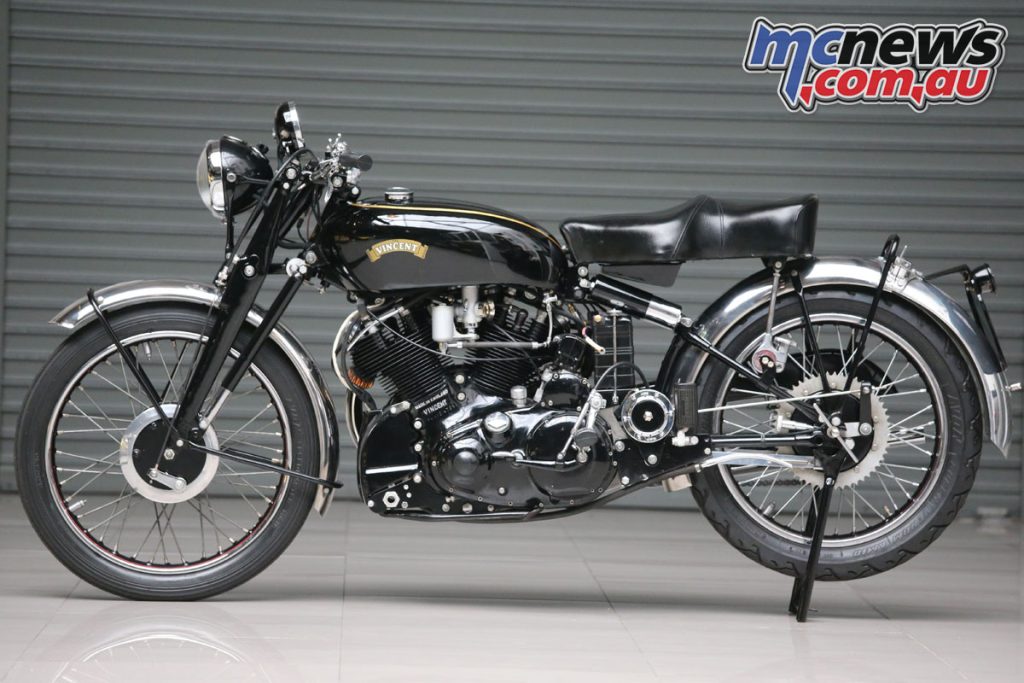
While other manufacturers were dipping their top models in chrome to symbolise extravagance, Vincent went against convention by painting the Black Shadow sinister black.
The Shadow’s mission was fast road work, and if anyone doubted it one glance at the 130 mm, 150 miles per hour (240 km/h) Smiths speedometer sitting directly in front of the rider made its charter clear.
And of all Vincents, the quintessential model is the Series C Black Shadow of 1948 through until 1954.
Although the Shadow’s black engine looked menacing, the specification was not radically different from the touring Rapide. Both shared a 998 cc overhead valve 50-degree V-twin, with a bore and stroke of 84 x 90 mm.
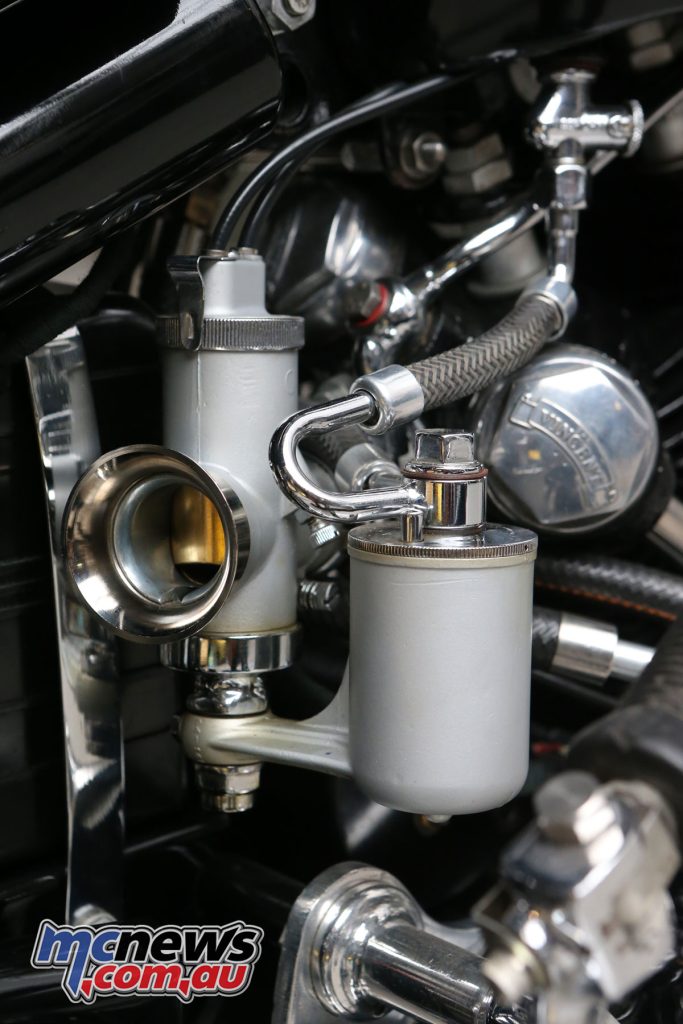
Inside the motor were slightly higher compression (7.3:1) pistons, with some internal polishing, including the intake ports. The cams were selected from the production line for optimum timing, stainless steel pushrods moved polished rocker arms, first gear was taller, but the unusual Vincent self-servo clutch was unchanged.
The Amal carburettors were larger (28.6 mm), and were mounted on special bronze flanges. These few modifications saw the power increase by ten horsepower, to 55 horsepower at 5700 rpm.
This may not seem much by modern standards, but it was enough to propel the Black Shadow to a top speed of nearly 200 km/h. In the late 1940s only a handful of production motorcycles would reach the magic “ton” (161 km/h), and 200 km/h was unheard of.
Designed for the open road, the Black Shadow was no round town runabout, as the factory recommended a minimum 20 kilometre warm up for the engine. Ignition was by Lucas magneto and starting a Black Shadow required a hefty boot.
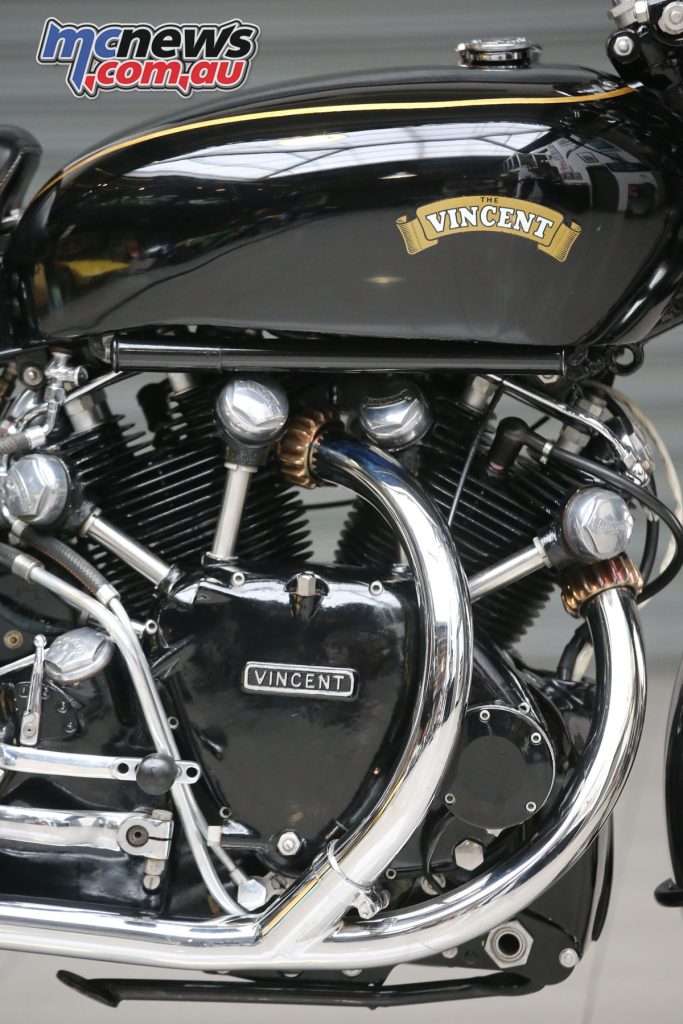
The Vincent chassis was also unusual for the time as the engine was the primary chassis component. The rear suspension was a cantilever type, and the rear fork pivoted directly behind the gearbox.
The steering head bolted directly to the front cylinder head, and while the early Black Shadow had a Brampton girder front fork, the Series C used a unique Girdraulic fork.
The Girdraulic (Girder with Hydraulic damping) married the older link-type fork, with its well-braced legs, with the longer damped travel of the telescopic fork. It was another example of Phil Irving and Philip Vincent’s refusal to follow fashion.
They were staunch believers in a rigid front end and saw inherent problems of tube flex and brake dive with the increasingly popular telescopic fork.
For the Black Shadow the brakes were upgraded to cope with the extra performance, and while the twin brakes remained relatively small at 178 mm, the Shadow gained ribbed cast-iron drum for improved heat dissipation.
The wheels were a large diameter 20-inch front and 19-inch rear, while the dry weight was a moderate 208 kg. The handling was compromised by the limp dampers of the time, but the Black Shadow was more about top speed than race track prowess.
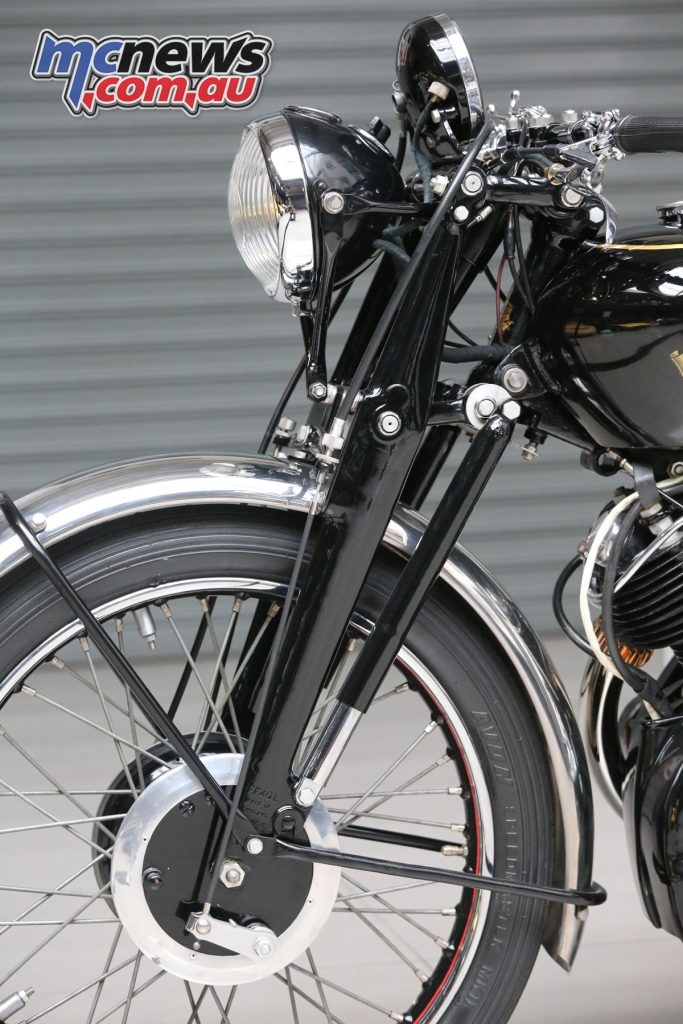
The first Black Shadow was produced in 1948, inspired by a special racing HRD twin, nicknamed “Gunga Din”, developed by Phil Irving and George Brown during 1947.
Although Philip Vincent was enthusiastic about producing a performance version of the touring Rapide, Vincent’s managing director Frank Walker initially vetoed the plan.
Against Walker’s decree, Irving and Brown clandestinely assembled a brace of Black Shadows, presenting him with a fait accompli.
Around 80 “B” Series Black Shadows were produced before the seminal Series C Black Shadow was introduced late in 1948. These were initially badged “HRD”, before becoming “Vincent” late in 1949.
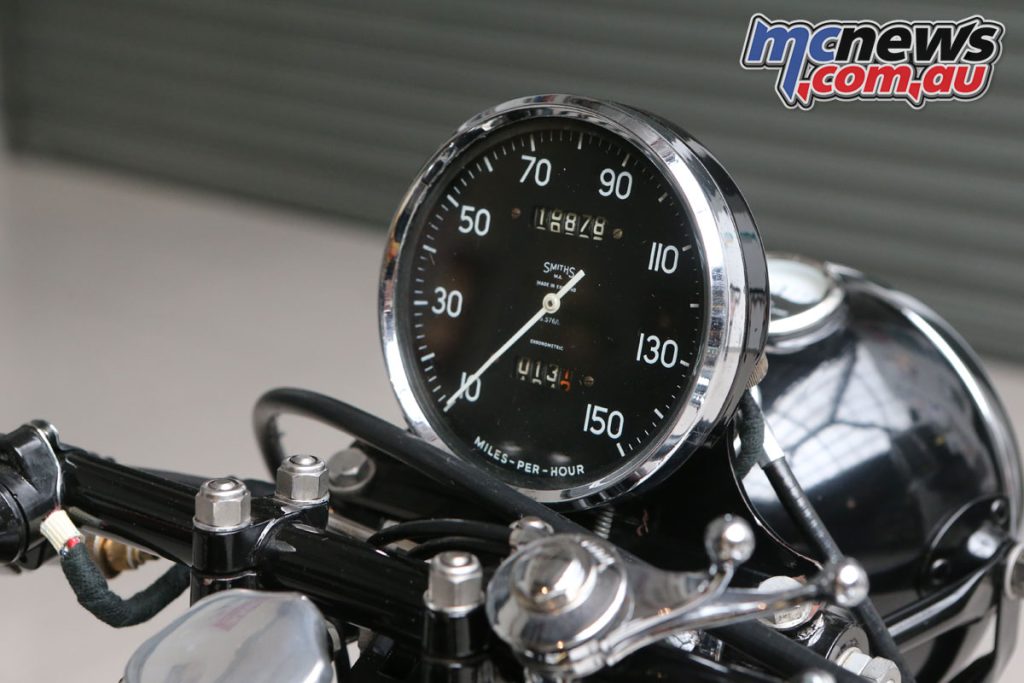
Releasing the Black Shadow to the press, Philip Vincent announced it, “Would attain 125 mph (200 km/h), but only machines in tip-top condition could attain it.”
In 1952 the factory ran a modified Series C Black Shadow at Montlhery in France, setting a new 1000 km speed record at 162 km/h. Speed has always been fashionable, and when it came to speed, the Series C Black Shadow was peerless.
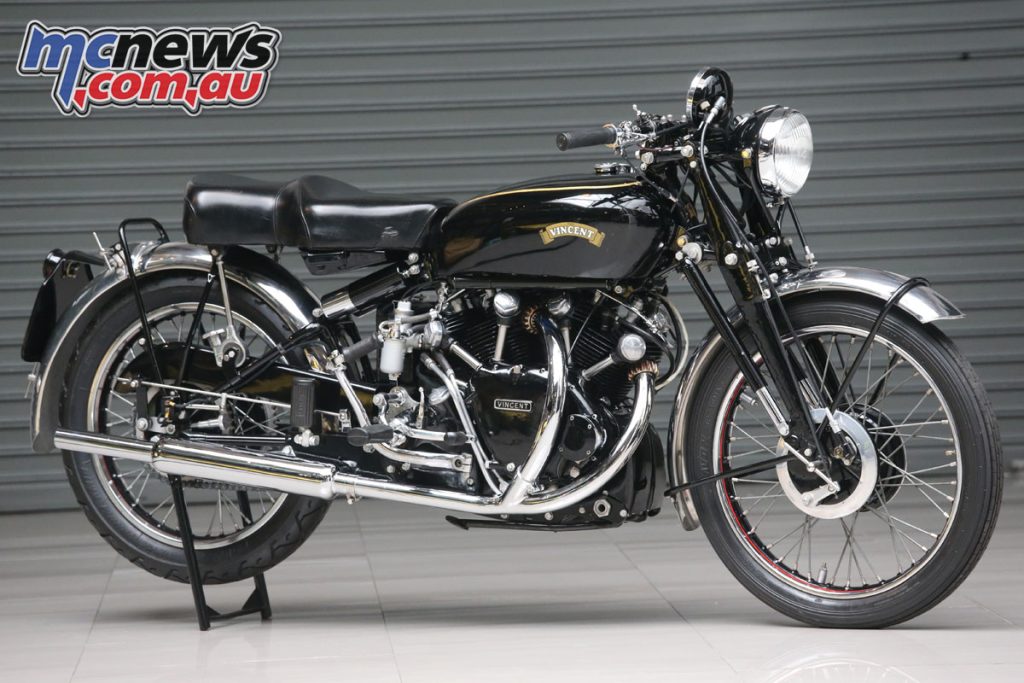
| Vincent Black Shadow Specifications | |
| Engine | 998 cc 50° OHV V-twin |
| Bore x stroke | 84 × 90 mm |
| Compression ratio | 7.3:1 |
| Top speed | 201.2 km/h |
| Power | 55 hp @ 5700 rpm |
| Carburetion | Amal carburettors |
| Ignition type | Lucas magneto |
| Transmission | Four-speed |
| Frame type | Welded box or tubular backbone |
| Suspension | Girdraulic fork, cantilever type rear |
| Brakes | 178 mm drum brakes Front/Rear |
| Tyres | 3.00 × 20 (F), 3.50 × 19 (R) |
| Wheelbase | 1435 mm |
| Seat height | 826 mm |
| Dry Weight | 207.7 kg |























